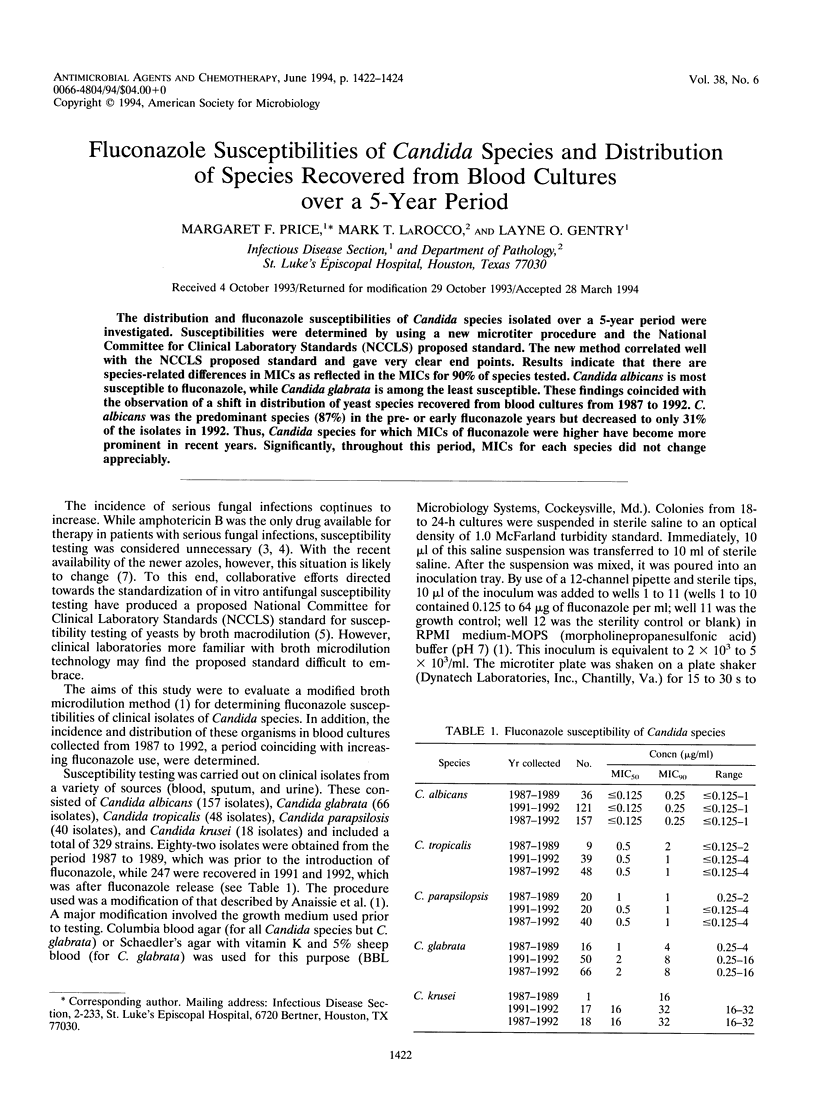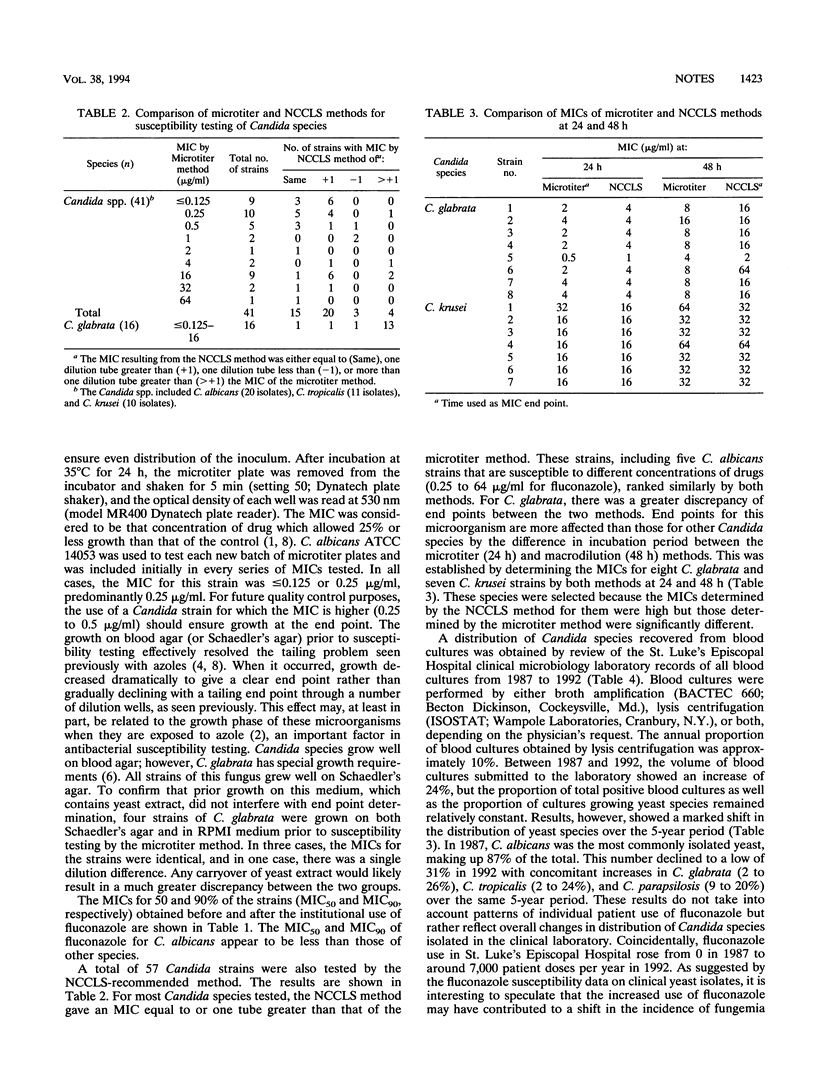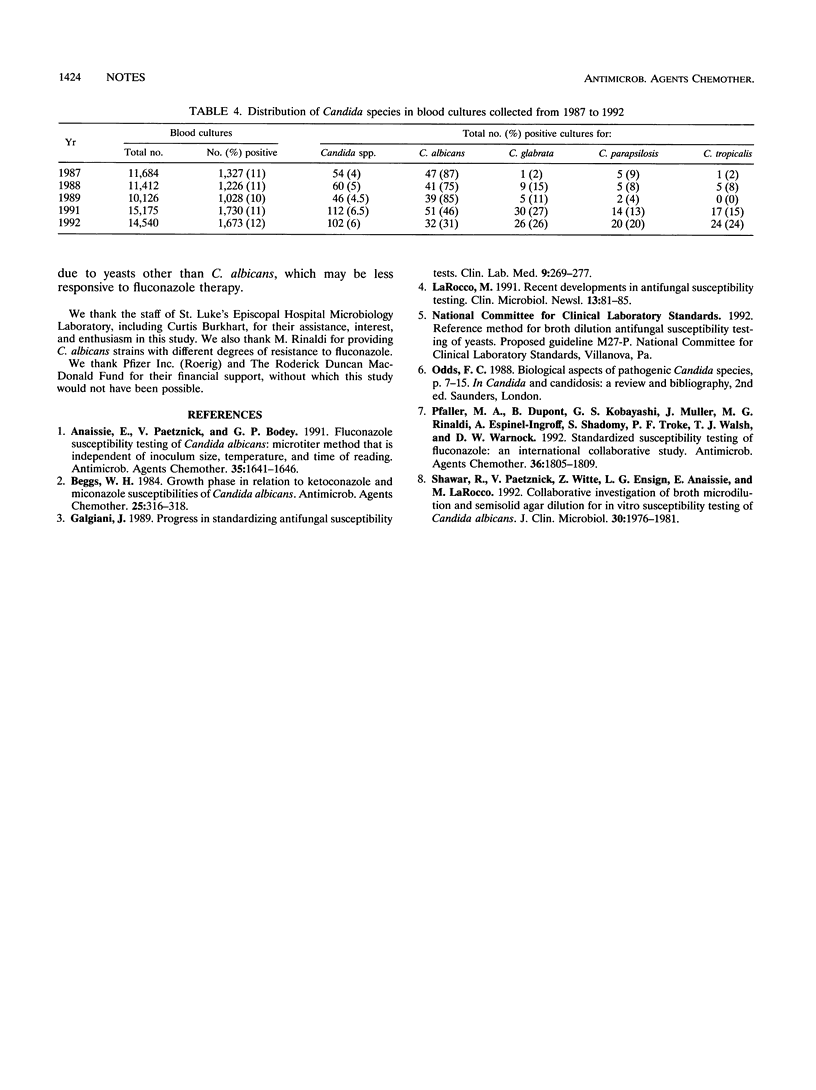Abstract
The distribution and fluconazole susceptibilities of Candida species isolated over a 5-year period were investigated. Susceptibilities were determined by using a new microtiter procedure and the National Committee for Clinical Laboratory Standards (NCCLS) proposed standard. The new method correlated well with the NCCLS proposed standard and gave very clear end points. Results indicate that there are species-related differences in MICs as reflected in the MICs for 90% of species tested. Candida albicans is most susceptible to fluconazole, while Candida glabrata is among the least susceptible. These findings coincided with the observation of a shift in distribution of yeast species recovered from blood cultures from 1987 to 1992. C. albicans was the predominant species (87%) in the pre- or early fluconazole years but decreased to only 31% of the isolates in 1992. Thus, Candida species for which MICs of fluconazole were higher have become more prominent in recent years. Significantly, throughout this period, MICs for each species did not change appreciably.
Full text
PDF


Selected References
These references are in PubMed. This may not be the complete list of references from this article.
- Anaissie E., Paetznick V., Bodey G. P. Fluconazole susceptibility testing of Candida albicans: microtiter method that is independent of inoculum size, temperature, and time of reading. Antimicrob Agents Chemother. 1991 Aug;35(8):1641–1646. doi: 10.1128/aac.35.8.1641. [DOI] [PMC free article] [PubMed] [Google Scholar]
- Beggs W. H. Growth phase in relation to ketoconazole and miconazole susceptibilities of Candida albicans. Antimicrob Agents Chemother. 1984 Mar;25(3):316–318. doi: 10.1128/aac.25.3.316. [DOI] [PMC free article] [PubMed] [Google Scholar]
- Galgiani J. N. Progress in standardizing antifungal susceptibility tests. Clin Lab Med. 1989 Jun;9(2):269–277. [PubMed] [Google Scholar]
- Pfaller M. A., Dupont B., Kobayashi G. S., Müller J., Rinaldi M. G., Espinel-Ingroff A., Shadomy S., Troke P. F., Walsh T. J., Warnock D. W. Standardized susceptibility testing of fluconazole: an international collaborative study. Antimicrob Agents Chemother. 1992 Sep;36(9):1805–1809. doi: 10.1128/aac.36.9.1805. [DOI] [PMC free article] [PubMed] [Google Scholar]
- Shawar R., Paetznick V., Witte Z., Ensign L. G., Anaissie E., LaRocco M. Collaborative investigation of broth microdilution and semisolid agar dilution for in vitro susceptibility testing of Candida albicans. J Clin Microbiol. 1992 Aug;30(8):1976–1981. doi: 10.1128/jcm.30.8.1976-1981.1992. [DOI] [PMC free article] [PubMed] [Google Scholar]


